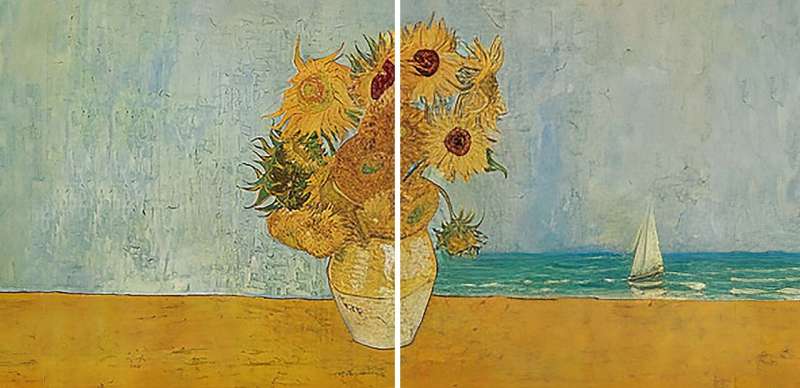Pictures, preferences, names, dates… Have you ever wondered why Big Tech and artificial intelligence (AI) companies collect so much personal information about you? A new paper out this week reveals a big reason why: self-relevance is a key predictor of what people like—that is, how much something means to us because it speaks to our identity, memories, needs, or feelings.
The study involves researchers from the Max Planck Institute for Empirical Aesthetics (MPIEA), the Ernst Strüngmann Institute (ESI) for Neuroscience, both based in Frankfurt am Main, Germany, and the Max Planck Institute for Psycholinguistics in Nijmegen, Netherlands.
Recent advances in AI are currently revolutionizing creative processes. In the graphic-visual realm, programs like DALL-E enable anyone to bring to life detailed artistic images of just about anything—including self-portraits according to very individual preferences and ideas.
These current developments highlight the power of art to speak to our individual lived experiences, and for these aesthetic experiences with art to be transformative. Which means they can have the potential to fundamentally change how we perceive ourselves and the world around us.
The new research published in Psychological Science provides an answer for why people are so captivated by these artificially created “mirror images.” The findings show that self-relevance is a crucial factor in the aesthetic appeal of art. In their study, the researchers used an AI technique called Style Transfer to create customized artworks for individual participants.
First, the study participants had to fill out a questionnaire about aspects of their self-construct, in which they provided information about childhood memories of the places they grew up, recent vacations, and their personal and social identity (e.g., “I am an LGBTQ activist” or “I am an avid roller skater”).
The researchers then selected photos that illustrated these aspects and used Style Transfer to create new artwork tailored specifically to each person. In addition, subjects were also shown artwork created for others, as well as a diverse set of AI-generated and human-made artwork unrelated to the study participants.

Van Gogh’s sunflowers, but for sailing fans, please! © Vincent Van Gogh: Twelve Sunflowers in a Vase (August 1888), Neue Pinakothek, Munich; ESI/C. Kernberger
The researchers found that test participants rated artworks that had been designed specifically for them as aesthetically much more appealing than those that had been designed for other people. Self-relevance also helped the researchers to predict which artworks their subjects would find particularly appealing. In addition, there were no features of the images that universally signaled self-relevance: individual observers tended to relate very different things to themselves.
But we don’t always seek out art just to see reflections of ourselves. Sometimes it can tell us about the experiences of others. Edward A. Vessel, the lead author of the study and research associate at the MPIEA, explains, “Even if an artwork provides a window onto something different from what we know, it doesn’t automatically mean that we can’t relate to it. If the work contains elements that establish or enhance self-relevance, a deeper understanding and thus a greater pleasure is nevertheless possible.”
Co-author Cem Uran, doctoral student in Martin Vinck’s research group at the ESI, continues, “For this study, we showed our subjects artworks that specifically contained self-relevant elements. However, with real art, it is entirely up to us to discover these visual elements—or perhaps we don’t even consciously notice them and simply like certain art without knowing why.”
“Here, we focused on showing that ‘individual self-relevance’ is more important than general rules such as aesthetic design or the golden ratio. Both are, of course, factors that can explain some parts of liking—but not all.”
This work forms the basis for understanding the psychological effects and massive popularity of AI tools for creating personalized content—from superhero avatars of oneself to imaginative narratives entirely based on personal preferences and desires.
The fact that self-referential information appeals to us so strongly also highlights the potential for abuse of personalized content, which is becoming increasingly ubiquitous through recommender algorithms serving up personalized feeds and content (TikTok, YouTube, etc.). This trend is accelerating dramatically with the recent advances in AI technology and is often not even consciously perceived by social media users.
More information:
Edward A. Vessel et al, Self-Relevance Predicts the Aesthetic Appeal of Real and Synthetic Artworks Generated via Neural Style Transfer, Psychological Science (2023). DOI: 10.1177/09567976231188107
Provided by
Ernst Strüngmann Institute (ESI) for Neuroscience
Citation:
New research provides an answer to why AI art captivates people (2023, August 18)



